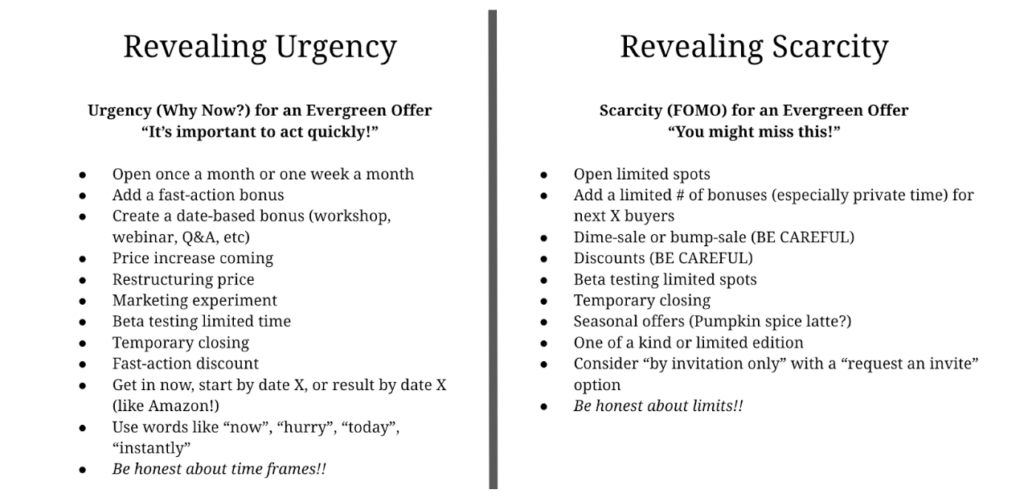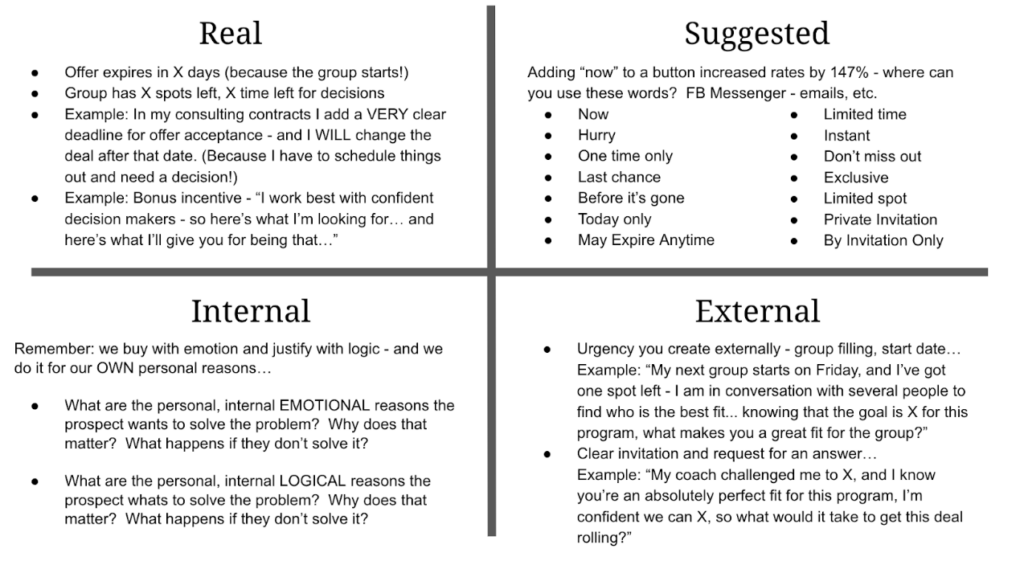1. Avoiding it all together because they think it’s got to be false urgency or sleazy.
2. Not fully understanding the difference between urgency vs scarcity and internal vs external motivators.
Creating a sense of urgency is NECESSARY – it’s not wrong, it’s not manipulative, it’s not sleazy – as long as you do it from a place of integrity.
The difference in the “light side” (influence and motivation) vs the “dark side” (persuasion and coercion)? Too often we hear that it’s intent. It’s more than that. It’s permission.
Are they choosing to read your sales page? Be on a call with you? Watch your video or webinar?
They’re CHOOSING to – they can click away, hang up, or stop the video. That’s permission.
Which means you have a RESPONSIBILITY – your potential client has come to you because they have a problem, they are ASKING for your help. To be in a place of integrity you can and you SHOULD use every single ethical tool in your tool box to support them in making the decision that fixes their problem!!
Let the client tell you why it IS in fact urgent (either on a call or in your messages back and forth leading up to your call).
GET CURIOUS – and listen ACTIVELY. Use “tactical and active empathy” – and keep in mind the concept of “loss-aversion” – we are more likely to take action to avoid losing something, than we are to take action to gain.
So… what’s at stake for your potential clients? You’ve got to get to what they stand to LOSE and not just GAIN.
Possible questions to ask…
These questions will help you reveal why it IS urgent for the potential client to take action to solve the problem or address the challenge you can help them with.
Urgency is why someone needs to act quickly. Scarcity is FOMO (limited availability).
So what urgency and/or scarcity exists for someone to say yes now vs. later?

Beyond the difference in urgency and scarcity, you also want to identify the difference in real vs. suggested and internal vs. external motivators.
Internal motivations are the emotional or logical reasons the prospect wants to solve the problem.
External motivations are what you reveal externally (the group is starting, the program is filling, bonuses are time limited, etc).
Here are some examples:

Take a few minutes and write down notes for yourself on how you can apply what you’ve just discovered to your own follow up and sales processes–and take action!
